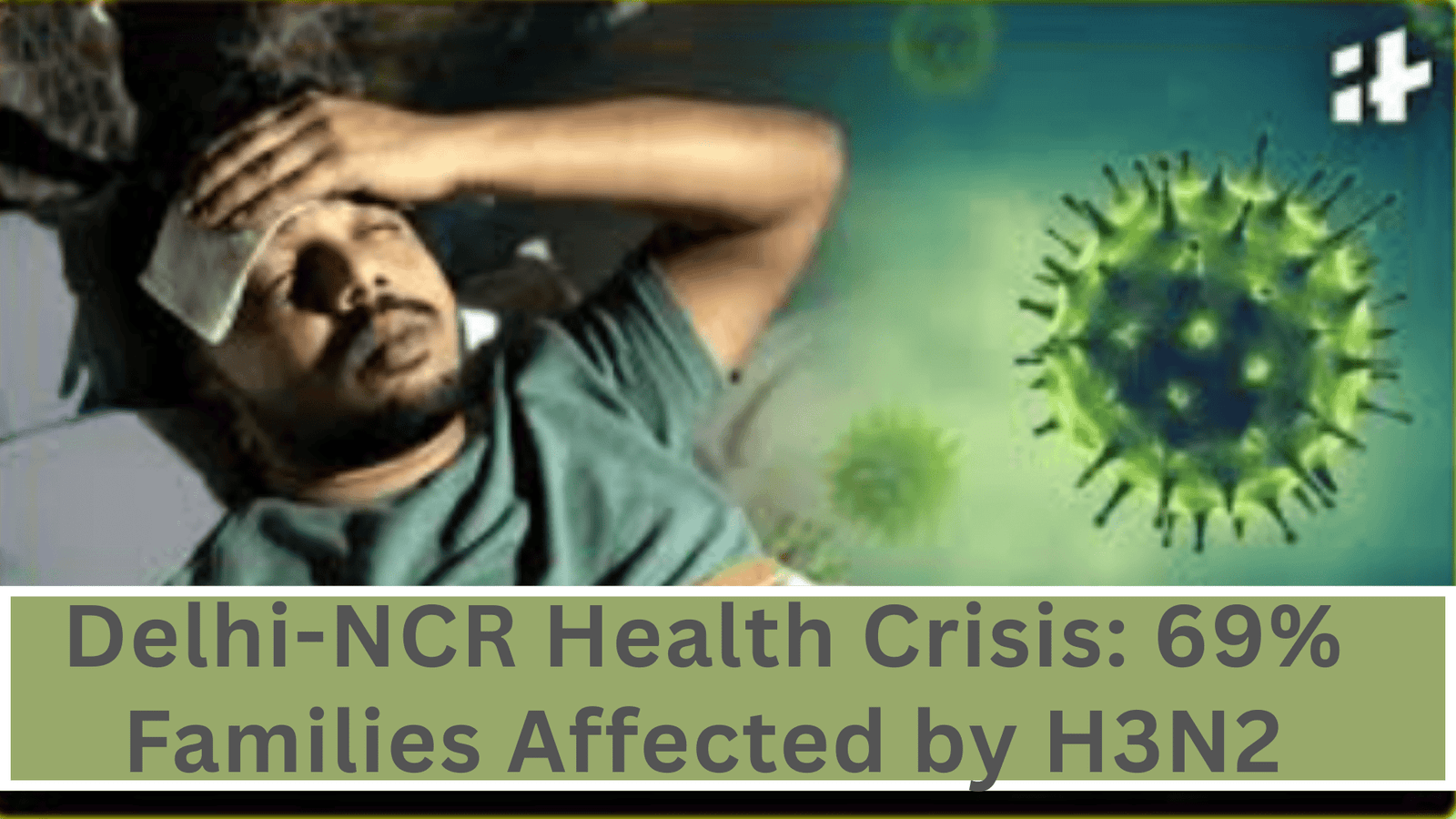Delhi-NCR has recently been battling a surge in seasonal infections, with health experts raising concerns about the H3N2 influenza strain. The virus has impacted a majority of families in the region leading to the Delhi-NCR Health Crisis, highlighting the urgent need for awareness and timely precautions.
Delhi-NCR Health Crisis: 69% Families Affected by H3N2
The Delhi-NCR Health Crisis has Affected around 69% Families by H3N2 and it has now become a growing challenge for public health authorities. Recent surveys show that more than two-thirds of households in the region have reported flu-like symptoms, pointing to widespread infection.
The H3N2 influenza virus, a subtype of influenza A, is known to spread rapidly through coughs, sneezes, and surface contact. While most cases present mild to moderate symptoms, certain groups remain highly vulnerable to severe complications, making timely medical guidance essential.
Symptoms of H3N2 Infection
The symptoms of H3N2 closely resemble seasonal flu, which often leads people to underestimate its seriousness.

Commonly reported signs include:
- High fever and chills
- Persistent cough and sore throat
- Body ache and fatigue
- Headache and nasal congestion
- Shortness of breath in severe cases
In some cases, patients have reported gastrointestinal symptoms such as nausea, vomiting, or diarrhea. The intensity of these symptoms may vary depending on an individual’s age and immunity level.
Risk Factors and Vulnerable Groups
Although H3N2 can affect anyone, certain groups are more at risk of developing complications. These include:
- Elderly individuals above 60 years with reduced immunity
- Children under 5 years, as their immune systems are still developing
- Pregnant women, due to higher susceptibility during pregnancy
- Patients with chronic illnesses like asthma, diabetes, or heart disease
- Immunocompromised individuals undergoing medical treatments
For these groups, the infection can lead to severe pneumonia, hospitalization, and in rare cases, life-threatening complications.
Diagnosis of H3N2
Since H3N2 symptoms overlap with common flu and COVID-19, proper diagnosis is vital. Doctors may recommend:
- Rapid antigen tests for influenza detection
- RT-PCR tests to confirm the presence of the H3N2 strain
- Chest X-rays or blood tests for patients with breathing difficulties or complications
Self-diagnosis is discouraged, as incorrect treatment can worsen the condition. Consulting a physician ensures accurate evaluation and timely medication.
Treatment and Recovery
Currently, there is no specific cure for H3N2, but antiviral medicines, when prescribed early, can reduce symptom duration and severity. General treatment includes:
- Adequate rest and hydration
- Fever reducers and pain relievers such as paracetamol (as prescribed)
- Antiviral medications in high-risk cases
- Oxygen therapy for patients with breathing issues
Most patients recover within 7–10 days if they follow medical advice and maintain proper care. However, ignoring symptoms may prolong recovery or cause severe outcomes.
Preventive Measures and Precautions
Prevention is the most effective tool against the spread of H3N2. Health experts recommend:
- Wearing masks in crowded areas to limit transmission
- Frequent handwashing with soap or sanitizer
- Avoiding close contact with infected individuals
- Covering coughs and sneezes with tissues or elbows
- Maintaining immunity through a balanced diet, exercise, and adequate sleep
- Vaccination for high-risk groups as per medical advice
Schools, offices, and public spaces in Delhi-NCR are being urged to maintain hygiene protocols to prevent further outbreaks. Families are also encouraged to isolate sick members to minimize household spread.
The Broader Impact on Delhi-NCR
With 69% of families already affected, the strain on healthcare systems in Delhi-NCR is evident. Hospitals have reported increased outpatient visits, and many households are incurring additional medical expenses. Beyond the physical toll, the health crisis has disrupted daily life, affecting productivity at workplaces and attendance in schools.
The government, along with health agencies, has intensified awareness campaigns and issued advisories urging people not to panic but to remain vigilant. These steps are expected to reduce the infection rate in the coming weeks.
In conclusion, the Delhi-NCR Health Crisis: 69% Families Affected by H3N2 – Symptoms, Risk Factors, Diagnosis, Treatment, Precautions highlights the importance of timely awareness and proactive healthcare. While most recover with basic care, high-risk groups must remain cautious, and preventive measures should become part of daily routine to avoid further spread.
Thank you for reading and staying informed about this important health update.


Comments
No comment